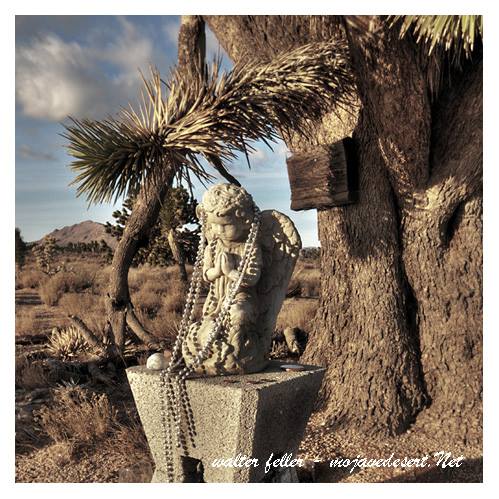
The roadside praying angel is one of those quiet desert mysteries that blend faith, memory, and human expression. It is a small stone carving, rough and straightforward, standing alone near the edge of a road in the Mojave National Preserve. Travelers who find it often notice the small offerings placed at its base—necklaces, coins, stones, or bits of ribbon—tokens left by strangers moved by something they may not fully understand. There are no signs, no plaques, and no explanation for why it is there, only the silent presence of the angel itself.
Its origins are unknown, but that is part of its power. In the desert, where life feels fragile and time seems endless, people have long left markers of their passing. The angel may be a memorial to someone who died nearby, perhaps in an accident along the road. It might also be an act of devotion, a gesture of gratitude, or protection placed by a traveler who felt the desert’s vastness and wanted to acknowledge it. Some might even see it as a roadside shrine, a spot where faith touches the landscape without ceremony or permission.
Whatever its story, the praying angel fits into a long tradition of folk memorials scattered across the Mojave. These handmade symbols are not official monuments or park features; they are personal expressions, born out of loss, love, or awe. They stand where official history ends and personal meaning begins. Each one reminds us that people still reach for the sacred, even in the loneliest places. The stone angel is less a destination than a moment of reflection—a quiet sign that someone cared enough to mark the desert with prayer.